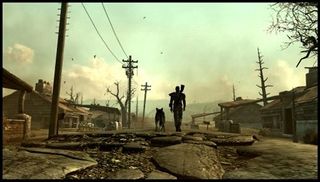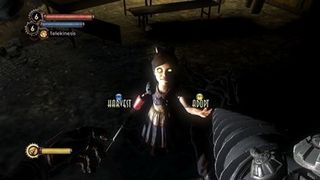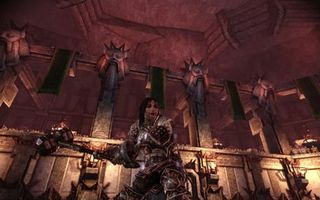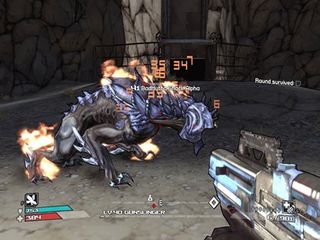The 7 worst ways to pad a game
Irritating strategies to draw games out, and why we hate them
Part of the appeal of most games is experiencing new and exciting environments. But every so often, developers – apparently unaware of the law of diminishing returns – decide that maybe they should send us slogging back and forth between environments we’ve already seen, instead of making more of them. Having to trek through an area you’ve already seen once is humdrum at best, and mind-numbingly dull at worst. If you’ve played through Devil May Cry 4, you already have a pretty good idea of what we’re talking about; you played through nearly every level in the game twice, once as Nero, and once as Dante. You fight most of the bosses at least twice, and in some cases three times. It was enough to have us frothing at the mouth by the time we were finished.

Above: Dante or no, this level was a lot less cool the second time around
Backtracking is also closely tied to another devious lengthening tactic: forced travel across massive environments. It seems that any developer who goes to the trouble of creating a huge game world can’t just sit back and trust gamers to explore on their own time; instead, they come up with ridiculous reasons for us to traipse around the remotest corners of the map and view all their hard work. This is even worse when they refuse to include a fast-travel system, even to places you’ve already been to.

Above: If only sailing was half as fun as this picture makes it look
Plenty of open-world games commit this sin, but the game that still haunts us, years after we shelved it for good, is The Legend of Zelda: The Wind Waker. Hours upon hours of sailing on that boat, staring at a small dot on the horizon, watching it slowly get bigger, and then getting knocked out of your boat by a rogue sea-monster was essentially cel-shaded sadomasochism.
Worst offenders: The Legend of Zelda: The Wind Waker, Metroid: Prime
Notable exception: Fallout 3
Sign up to the GamesRadar+ Newsletter
Weekly digests, tales from the communities you love, and more

Above: Walking across the wasteland was actually WAY more fun than this picture makes it look
In Fallout 3, almost all the superfluous exploration and backtracking was optional. You could certainly kill a lot of time traveling across the massive game world, but if you stuck entirely to your primary objectives, you weren't really penalized – not even for having less XP, as the enemies scaled in difficulty according to your level. And if you didn’t want to hike back to previously visited locations, there was a fast-travel system available right from the get-go. Whoever made that decision better have gotten a damn raise.
There’s a reason that you typically control a battle-hardened warrior in combat games: they’re able to handle themselves even in the toughest situations. These games are usually pretty hard to begin with, asking players to keep their eyes on 10 different things at once and hit all the right buttons at just the right time, with survival as their only reward. Once the game is satisfied that you’ve learned how to survive its various hazards, though, you’ll probably have to run an escort mission, taking a weak, defenseless, frequently slow-moving NPC from point A to point B. As if that weren’t bad enough, the character you’ll babysit is almost guaranteed to take a childish delight in getting smacked in the face and netting you a game over.
One of the more poignant examples is Bayonetta. After you’ve played through several levels, unlocked some new weapons and combos and started to feel pretty badass all around, you’ll get saddled with watching over a small child for an entire level. She has no offensive abilities at all, and will simply curl up and go fetal as soon as combat begins. The enemies typically attack quickly and from all sides, so it’s almost guaranteed that she’s going to take some damage. And there’s practically nothing you can do to stop it.
Worst offenders: Bayonetta, Half-Life 2: Episode 1
Notable exception: BioShock 2

Above: Guarding these little ones from splicers was a hoot and a half
BioShock 2 was filled with escort missions, and they were great. Adopting Little Sisters and setting up defenses before harvesting Adam from Splicer corpses is definitely one of the high points of the game, and really helped to make you feel like a Big Daddy. And all the added monetary rewards for doing so were just gravy.
One constant law of the gaming world is that if a tournament is ever mentioned in a game, you will somehow be required to fight in it. What this means you’re going to spend at least an hour fighting a slew of enemies in the same damn room, usually without your party to back you up (if it’s an RPG), coming up against foes that you’ll never have to deal with again. It’s just such an overused game mechanic that it’s almost become an ironic parody of itself at this point.

Above: Not even the roar of the crowd can keep you enthralled through two separate tournament sequences
Worth particular mention is Dragon Age: Origins, and the tournament sequence in Orzammar. Not one gamer thought they’d be able to escape fighting in that tournament – though we still dared to hope. Not only this, but if you had the misfortune to choose the Dwarf Commoner as your storyline, you had to fight in two tournaments throughout the game, both in the same freaking city. That’s just malicious.
Worst offenders: Dragon Age: Origins, Tales of Vesperia
Notable exception: Borderlands

Above: Picture about 12 of these suckers, and you kind of get the gist of it
The Skag Pit was actually a pretty good way to kill some time in the game. Aside from being entirely optional, when you had four players together it presented some of the most tense and dynamic battles the game had to offer. And being in such an enclosed space, you were forced to stick with your teammates and work together to survive, because if even one of you died, you’d lose the round.
Most Popular


